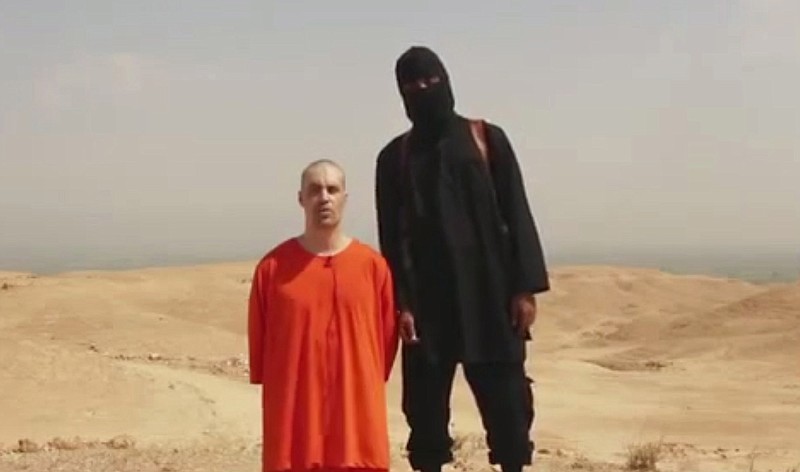WASHINGTON - A U.S. drone strike targeted a vehicle in Syria believed to be transporting the masked Islamic State militant known as "Jihadi John" on Thursday, according to American officials. Whether the strike killed the British man who appears in several videos depicting the beheadings of Western hostages was not known, officials said.
Mohammed Emwazi was the target of an airstrike in Raqqa, Pentagon press secretary Peter Cook said in a statement. Officials were assessing the results of the strike, he said.
A U.S. official told The Associated Press that a drone had targeted a vehicle in which Emwazi was believed to be traveling. The official was not authorized to speak publicly and requested anonymity.
Emwazi, believed to be in his mid-20s, has been described by a former hostage as a bloodthirsty psychopath who enjoyed threatening Western hostages. Spanish journalist Javier Espinosa, who had been held in Syria for more than six months after his abduction in September 2013, said Emwazi would explain precisely how the militants would carry out a beheading.
Those being held by three British-sounding captors nicknamed them "the Beatles" with "Jihadi John" a reference to Beatles member John Lennon, Espinosa said in recalling his months as one of more than 20 hostages.
Among those beheaded by Islamic State militants in videos posted online since August 2014 were U.S. journalists Steven Sotloff and James Foley, U.S. aid worker Abdul-Rahman Kassig, British aid workers David Haines and Alan Henning, and Japanese journalist Kenji Goto.
In the videos, a tall masked figure clad in black and speaking in a British accent typically began one of the gruesome videos with a political rant and a kneeling hostage before him, then ended it holding an oversize knife in his hand with the headless victim lying before him in the sand.
Emwazi was identified as "Jihadi John" last February, although a lawyer who once represented Emwazi's father told reporters that there was no evidence supporting the accusation. Experts and others later confirmed the identification.
Emwazi was born in Kuwait and spent part of his childhood in the poor Taima area of Jahra before moving to Britain while still a boy, according to news reports quoting Syrian activists who knew the family. He attended state schools in London, then studied computer science at the University of Westminster before leaving for Syria in 2013. The woman who had been the principal at London's Quintin Kynaston Academy told the BBC earlier this year that Emwazi had been quiet and "reasonably hard-working."
Officials said Britain's intelligence community had Emwazi on its list of potential terror suspects for years but was unable to prevent him from traveling to Syria. He had been known to the nation's intelligence services since at least 2009, when he was connected with investigations into terrorism in Somalia.
The beheading of Foley, 40, of Rochester, New Hampshire, was deemed by IS to be its response to U.S. airstrikes. The release of the video, on Aug. 19, 2014, horrified and outraged the civilized world but was followed the next month by videos showing the beheadings of Sotloff and Haines and, in October, of Henning.
